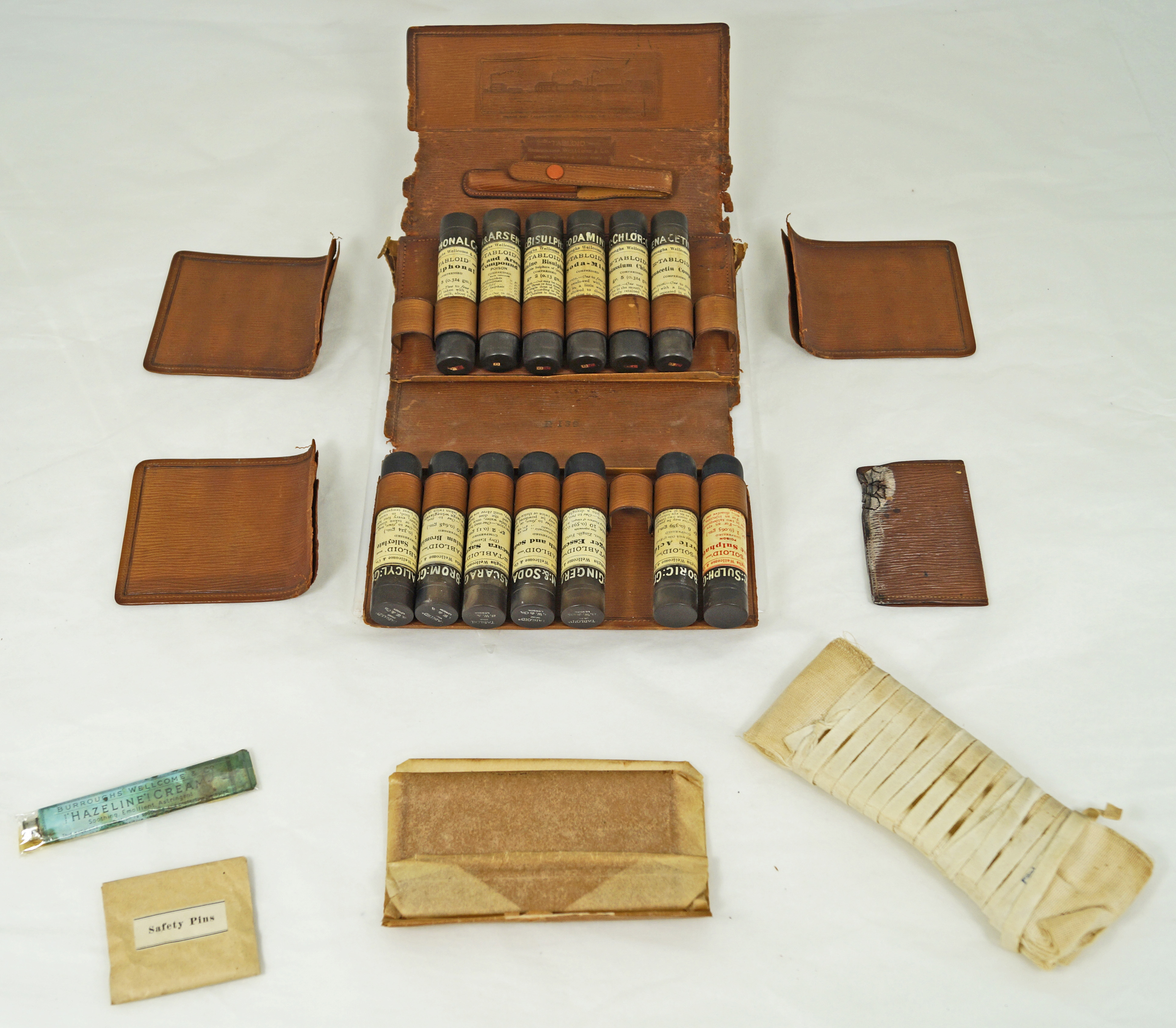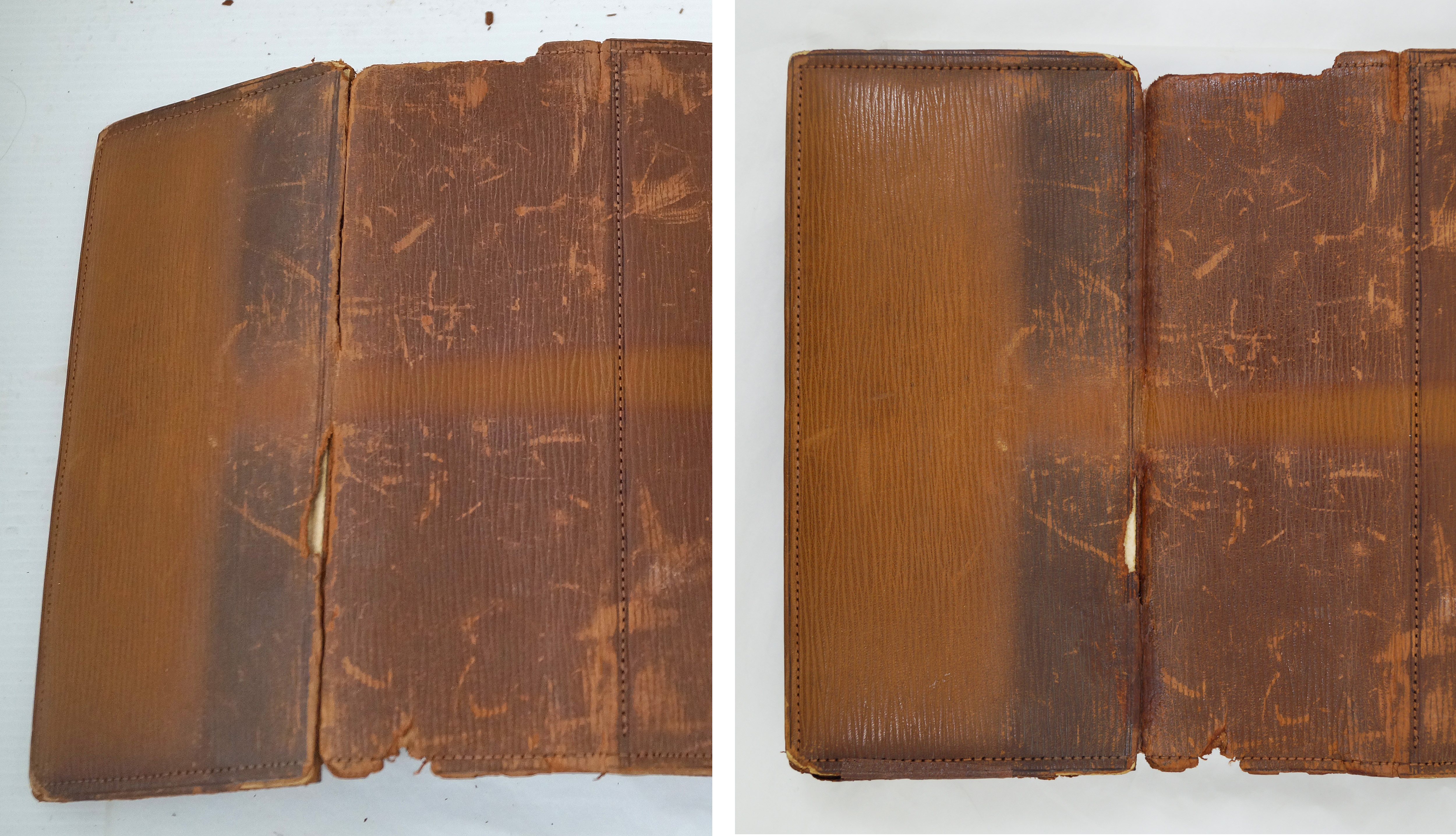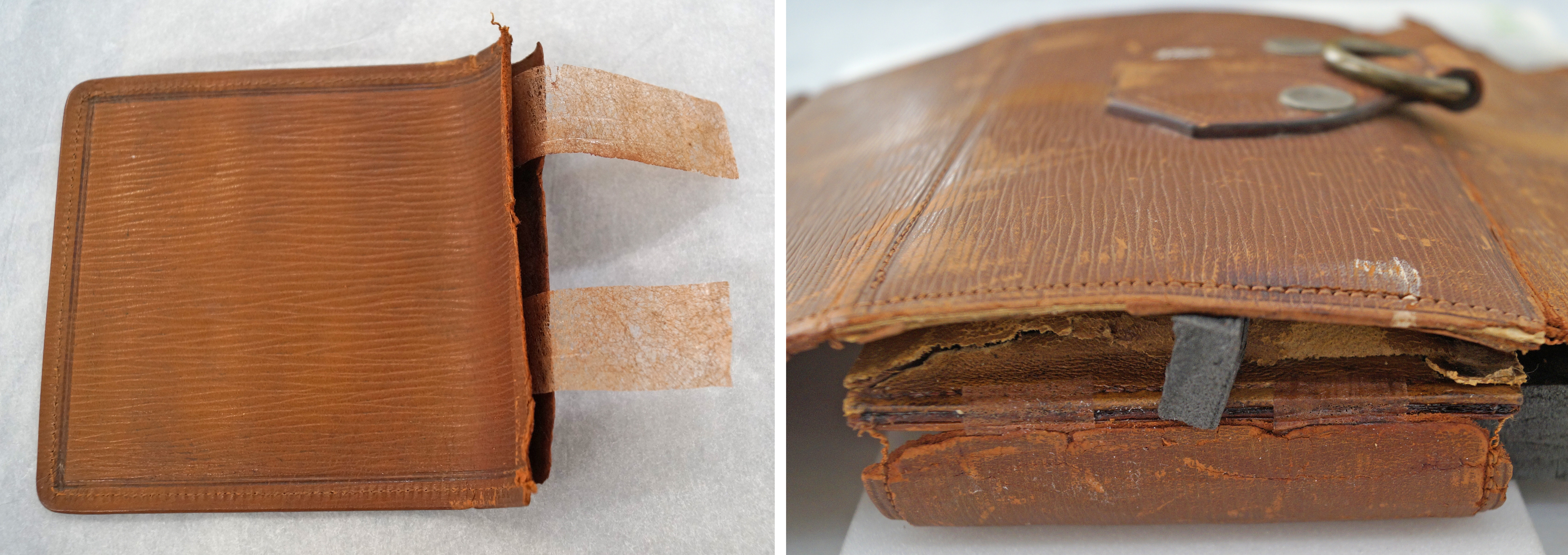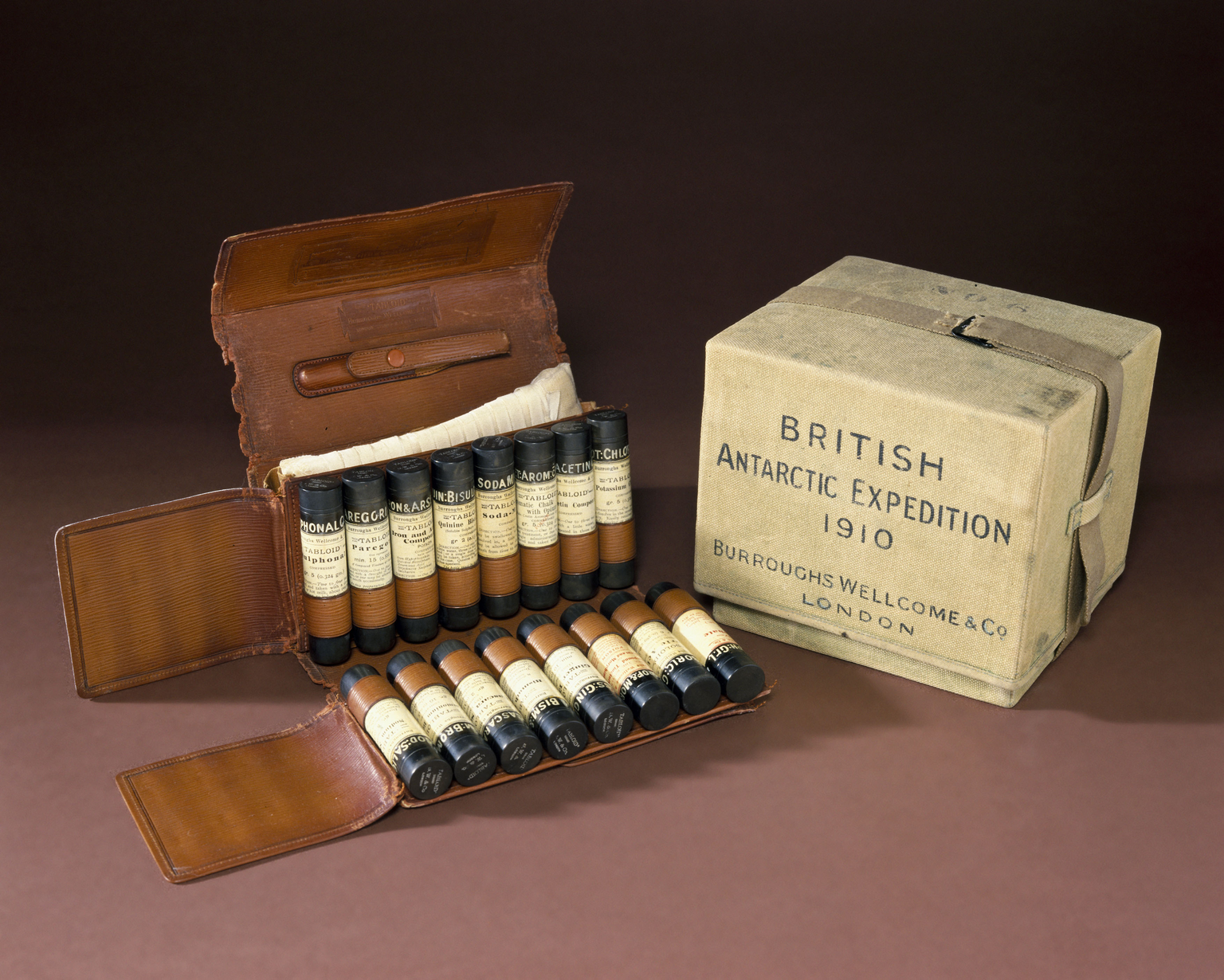Over the past year I have worked as a conservator on the Science Museum’s upcoming Medicine Galleries, due to open in 2019.
One object that has been a privilege to work on is a medical kit used by the British explorer Ernest Shackleton (1874-1922) during his 1907-1909 attempt to reach the South Pole.
Although unsuccessful, Shackleton’s team did set a record for the southernmost point reached, and were able to map some of the area. Shackleton returned to Britain a public hero and was Knighted for his achievements.
The medical kit was made by Burroughs & Wellcome Co. and consists of a thermometer, bandages, plasters, safety pins, a tube of Hazeline cream, and sewing needles all held within a leather wallet.
There are also sixteen tubes containing various medicines and tablets of the day. In a bid of advertising genius, Henry Wellcome donated his company’s medicine chests to various expeditions with the hope they would donate them back to his burgeoning history of medicine collections.

The aims for conservation were to document, clean, repair and stabilise the medical kit so that it’s fit for long term display.
The leather wallet was in poor condition and presented the biggest conservation challenges. The leather had deteriorated, a phenomenon known as red-rot, causing it to crumble and become powdery. It was also torn in several places.
I applied a weak consolidant called Klucel G over the leather surface to hold any loose fragments on to the wallet surface and prevent future shedding. Klucel G had the advantage that it did not discolour or alter the surface appearance, and still retained the natural flexibility of the leather.
Where larger areas of leather had crumbled or torn I adhered pieces of dyed Japanese tissue on the reverse side of the wallet for support and to prevent pieces detaching in the future.

The three flaps that covered the medicine tubes had fully torn off (a fourth flap is missing). To reattach the flaps I created a hinge from strips of dyed Reemay fabric. Strips were adhered between the two halves of each flap, and the ends of the strips attached discretely to the wallet.
The strips were coated with an adhesive and allowed to dry before the ends were adhered to the wallet by heat activation of the adhesive using a heat spatula. Using heat meant a stronger bond could be produced, and done so more quickly compared with applying the adhesive on wet and waiting for it to set.
The flaps are now securely attached and can be opened and closed as originally intended.

There were also two large tears in the expandable sides of the middle pocket. As these will not be visible under the open flaps of the wallet on display I felt that a full repair was unnecessary.
Instead I found a simple solution by wrapping a strip of transparent tape around the wallet, under the medicine tubes and through the gaps between the strips attaching the flaps on each side, with double sided adhesive tape to hold the ends together.
The two sides of the pocket are now held together, enclosing the contents and allowing the front face of the pocket to rest in a more natural position.

I found treating Shackleton’s medical kit both an interesting and rewarding experience. While it still bears many scars from the expedition it is now in a much more stable condition and will hopefully interest people for years to come. I can’t wait to see it on display.
The Science Museum Medicine Galleries are due to open in 2019.
